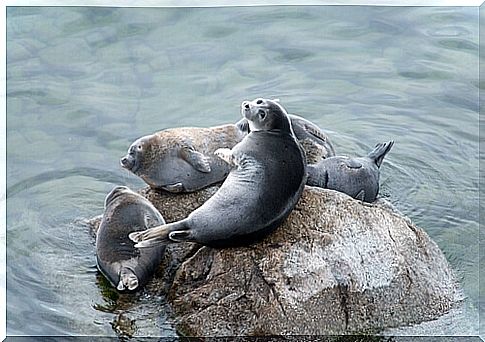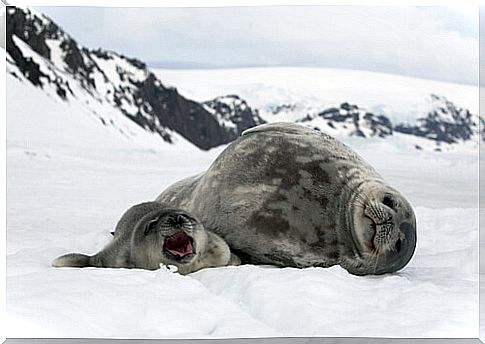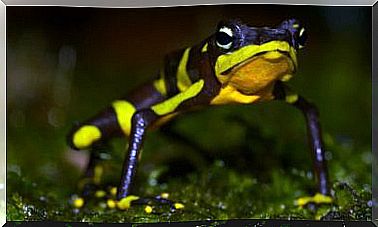Seal: Know All About This ‘water Dog’

She spends many hours lying in the sun on the seashore, has a robust body and is an agile swimmer. The seal reminds us of a dog that loves water and in this article we will tell you all about it.
Seal characteristics
Its body is elongated and uniform, since it has adapted to the marine environment in which it lives: in this way it can swim without problems and catch food. Its limbs are short and flat, as it uses them as fins that allow propulsion and movement in the water.
The two characteristics of seals that differentiate them from other pinniped marine mammals – such as the walrus or the sea lion – is that they lack an auditory pin and their hind limbs are directed backwards.
As for the fur, that of the seal is dense and short in adulthood; because it does not offer enough thermal protection against the cold, it has a very thick layer of subcutaneous fat… which can represent a quarter of its body weight!
Seal behavior
Unlike sea lions, seals do not form very large colonies. Some even only stay with their partner – they are monogamous – or in a tribe of three or four adults. They have the ability to swim long distances and dive deep – up to 600 meters – to capture their prey. They are not migratory and prefer the shores of bays, both with rocks and with sand.
When the female suckles her calf, the milk she gives her has a large amount of calories and fat. In this way, the cub can endure the long absences of the mother, who goes out to look for food – fish, crustaceans and cephalopods – and can take hours to return.
Seal species
At present there are 19 species of seals, of which we highlight the following for being the most ‘famous’ or for living in characteristic places:
1. Gray seal
The gray seal – the photo that opens this article – lives in the waters of the North Atlantic and the colony with the most specimens is found on Sable Island, Canada. It is large: the males – who have dark fur – can weigh up to 300 kilos and measure three meters. The females are much smaller and with a lighter body.
2. Baikal seal
Also called nerpa, it is the only species of seal that lives in fresh water, more precisely in Lake Baikal, Siberia, as well as the longest: they can reach 55 years of life. The skin is white or black with gray spots. He spends a lot of time among the rocks surrounded by water and can go 70 minutes without breathing on the surface.

3. Weddell seal
It lives in Antarctica, it does not migrate but it moves according to the ice conditions. In this case, the females are larger than the males and thanks to the concentration of myoglobin in the blood, they can dive up to 600 meters and spend an hour underwater without having to breathe.

4. Mediterranean monk seal
It is one of the rarest species of seal and is in serious danger of extinction. The few-specimen colonies are located on the coasts of Turkey. Greece, Mauritania and the island Madeira. They are dark in color with spots all over the body, which allow them to identify with each other.

5. Harbor or harbor seal
It inhabits the entire coastline of temperate and cold seas in the Northern Hemisphere and is the most distributed species of seal. Brown, gray or tan in color, it has curved nostrils and lives as a family on rocky areas. Within a few hours of being born, the common seal pups can swim without problems.










